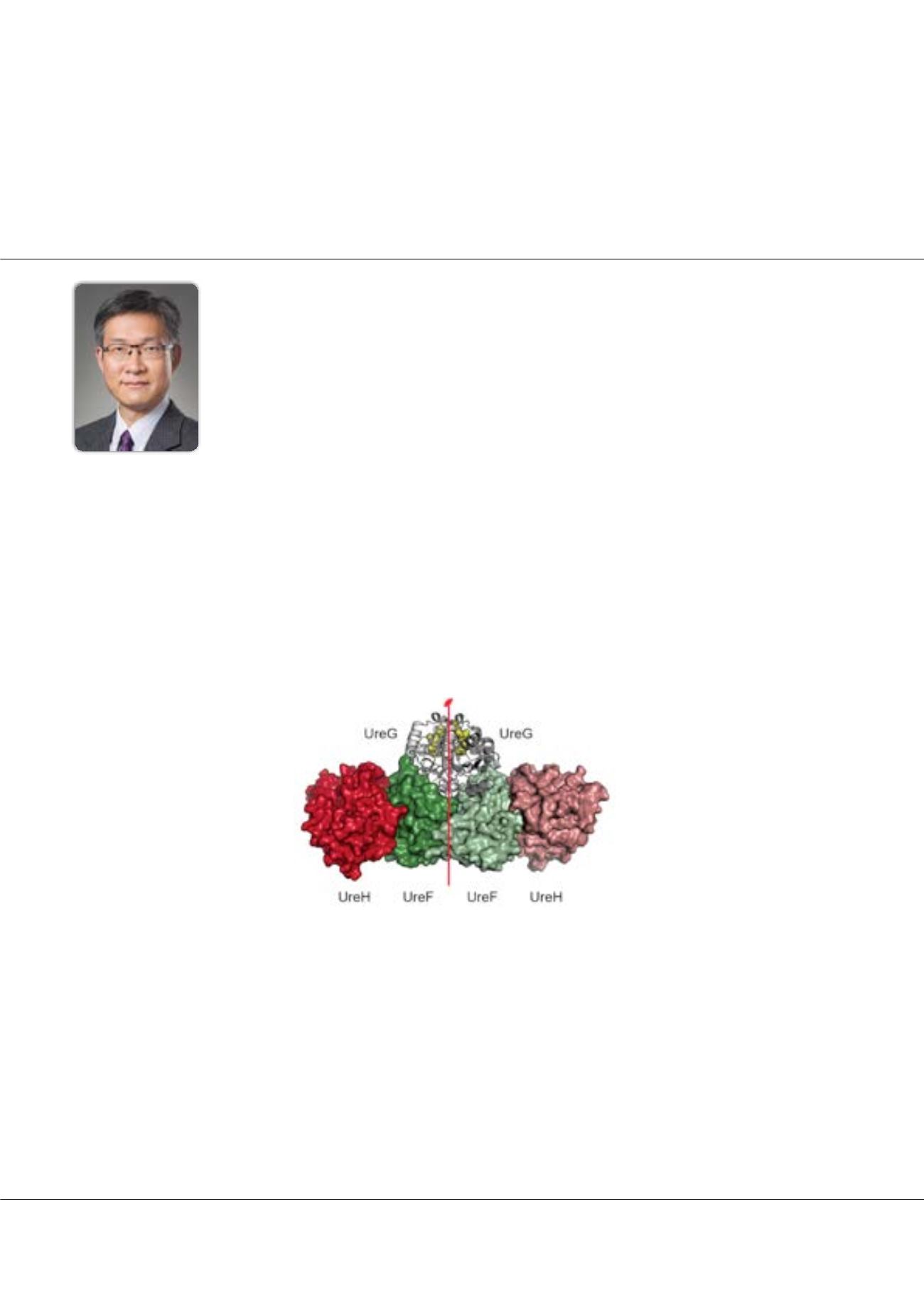

Volume 8
Journal of Biotechnology & Biomaterials
ISSN: 2155-952X
Biotech Congress 2018 & Enzymology 2018
March 05-07, 2018
Page 60
conference
series
.com
JOINT EVENT
20
th
Global Congress on
Biotechnology
3
rd
International Conference on
Enzymology and Molecular Biology
&
March 05-07, 2018 London, UK
Kam Bo Wong, J Biotechnol Biomater 2018, Volume 8
DOI: 10.4172/2155-952X-C2-090
How urease accessory proteins coupled GTP hydrolysis/binding to nickel delivery to urease?
U
rease is a nickel-containing metalloenzyme that catalyzes the hydrolysis of urea into ammonia and carbon dioxide. This
enzymatic reaction, which produces the acid-neutralizing ammonia, is essential for the survival of
Helicobacter pylori
in
human stomach. In
Helicobacter pylori
, nickel ions delivery for urease maturation is assisted by four urease accessory proteins,
UreE, UreF, UreG and UreH. Specific protein-protein interactions among these urease accessory proteins are essential for the
control of binding/release of nickel along the metal delivery pathway. We have previously determined the crystal structures of
UreF/UreH andGDP-bound-UreG/UreF/UreH complexes. Upon binding of UreH, the C-terminal residues of UreF are induced
to form an extra helix and a loop structure stabilized by Arg-250. These conformational changes facilitate the recruitment of
UreG to the UreG/UreF/UreH complex, which is essential to urease maturation. Recently, we have determined the crystal
structure of the nickel/GTP-bound UreG dimer, which reveals how GTP hydrolysis induces conformational changes that
induce dissociation of UreG from the UreG/UreF/UreH complex and the release of nickel to the urease.
Figure :
Crystal structure of UreG/UreF/UreH complex.
Biography
Kam Bo Wong obtained his BSc and MPhil from the Chinese University of Hong Kong. He then pursued his PhD degree in the laboratory of Prof. Alan Fersht at the Univer-
sity of Cambridge. After Postdoctoral training in the University of Washington and University of Cambridge, he joined the Chinese University of Hong Kong in 1999, where
he is now a Professor at the School of Life Sciences. His research interests are on the structure-function studies of proteins. His research group uses multi-disciplinary
techniques, including protein engineering, biophysical characterization, computational methodologies, and structure determination by NMR and X-ray crystallography, to
study how proteins function on the atomic and molecular levels.
kbwong@cuhk.edu.hkKam Bo Wong
The Chinese University of Hong Kong, China














